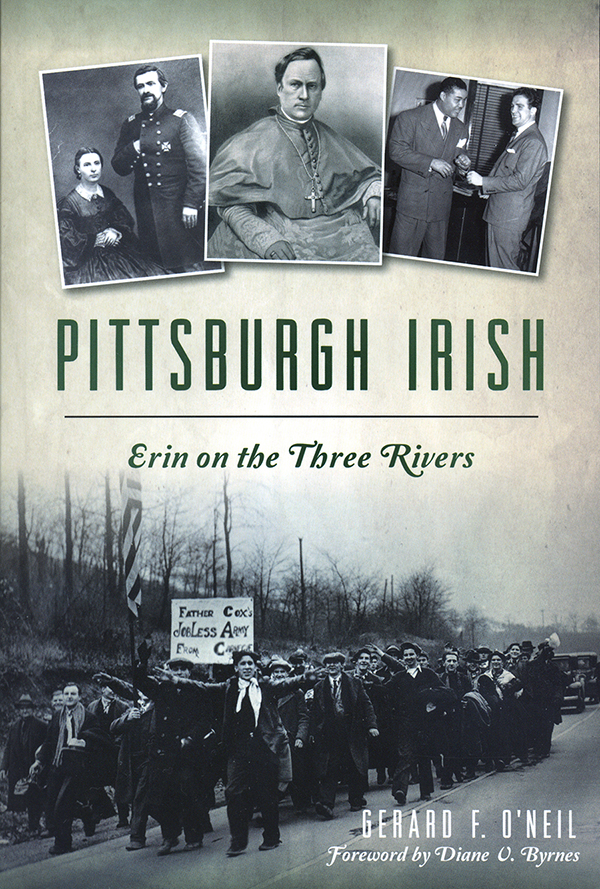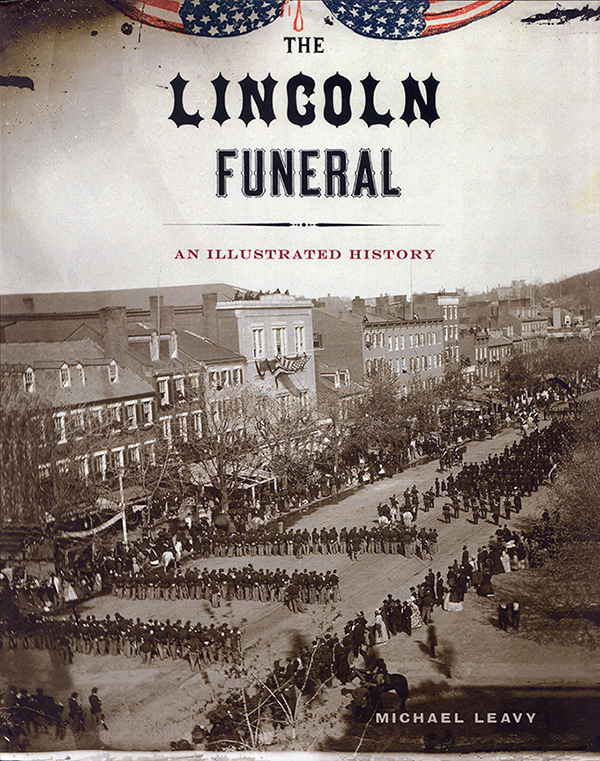 Pittsburgh Irish: Erin on the Three Rivers
Pittsburgh Irish: Erin on the Three Rivers
By Gerard F. O’Neil
The History Press, 2015
160 pp., b&w photos
Paperback, $21.99
Those interested in a survey of Irish influence in Pittsburgh and Southwestern Pennsylvania will surely find many examples of significance in Gerard F. O’Neil’s “Pittsburgh Irish: Erin on the Three Rivers.” Organized into six chronological chapters of general eras of Irish history in America, the book aggressively covers many different topics including politics, religion, music, dance, labor, war, and ethnic organizations that persist into the present day. The organization of the book jumps from topic to topic, making it easier to read in short sections rather than a continuous, unfolding narrative.
O’Neil begins his topics in the early 1700s, describing the early migration of the Irish from Ulster to Southwestern Pennsylvania to demonstrate who they were culturally and what skills and influence they brought to the area. Presbyterians dominated Irish immigration until 1830 as they sought religious tolerance and independence as farmers in Pennsylvania. Later, as Pittsburgh became a manufacturing center, many Irish who had trade skills and spoke English had an advantage at gaining employment and assimilating into American culture.
The Civil War is discussed in detail, as the conflict provided an opportunity for Irish immigrants and first-generation Irish American citizens to demonstrate their loyalty and patriotism. Of particular interest in this section is the story of Charles F. McKenna, an American of Irish Catholic ancestry who, at 16 years old, left his apprenticeship as a lithographer and enlisted in the 155th Regiment of Pennsylvania Volunteers in the Civil War. Surviving many military engagements, he became a prominent judge and Pittsburgh citizen; his story is a fascinating example of a nineteenth-century Irish Catholic’s journey in American society.
O’Neil concentrates on the early history of the Irish; post-World War II history is confined to the final chapter. Though he admits in his conclusion that there is no way to cover and interpret every event in the long history of Irish in Pittsburgh, he surely does try to give a glimpse at many instances where the Irish were and continue to be influential.
Reviewed by Liz Simpson, Assistant Editor and Assistant Registrar, Heinz History Center
 The Lincoln Funeral: An Illustrated History
The Lincoln Funeral: An Illustrated History
By Michael Leavy
Westholme Publishing, 2015
248 pp., 100 b&w illus., maps
Hardcover, $35
Swing a stovepipe hat in the history section of a bookstore and, chances are, you’ll knock over a shelf of books about Abraham Lincoln. The canon of scholarship about Lincoln — his times, family, and especially his assassination — is immense. One of the few angles of Lincoln’s saga to escape close academic scrutiny is his funeral train.
“The Lincoln Funeral: An Illustrated History” is Michael Leavy’s study of this overlooked topic. Leavy, a professional artist and prolific author, has published at least three books that are in-depth historical studies of trains and railroads. It is no surprise that he would find ample material in the national mourning of Lincoln, much of which occurred in railway stations and alongside train tracks as Lincoln’s funeral coach made its way from Washington, D.C., to Springfield, Illinois.
Leavy does not disappoint in his coverage of the President’s sad journey home. Each stop on the 13-day trip is covered, often with quotes from newspapers of the time and all with numerous photographs. Where possible, Leavy focuses on the work of individuals; railway workers, attendant soldiers, young girls with flowers, German choirs singing songs of mourning. By naming their names and providing as much detail as possible, Leavy paints a vibrant picture of a diverse population joined in grief.
For train buffs, this book will be time spent with a like-minded friend, one who speaks the language of railways past. For those interested in other angles of this topic, however, Leavy’s study comes up sparse. Readers hoping for information on Civil War-era funeral and death customs will come away wanting more history, more detail.
Also frustrating is his lack of care using Civil War-era terminology concerning funerals and mourning, particularly his continual misuse of the word “decorate” when referring to public buildings being draped (that’s the verb you want) in mourning. Leavy’s lack of expertise about such mourning minutia is not the only thing calling the quality of his research into question. There are no footnotes and the bibliography is largely online resources, many of which are not peer reviewed and a few of which, when followed, lead to odd or questionable sources.
Was this book intended for reference or for pleasure? It is problematic as an academic resource but, as an enthusiastically written study of an underappreciated topic, it succeeds in being an enjoyable read, and informative to those unfamiliar with the topic.
Reviewed by Jennie Benford, Director of Programming for The Homewood Cemetery Historical Fund in Pittsburgh